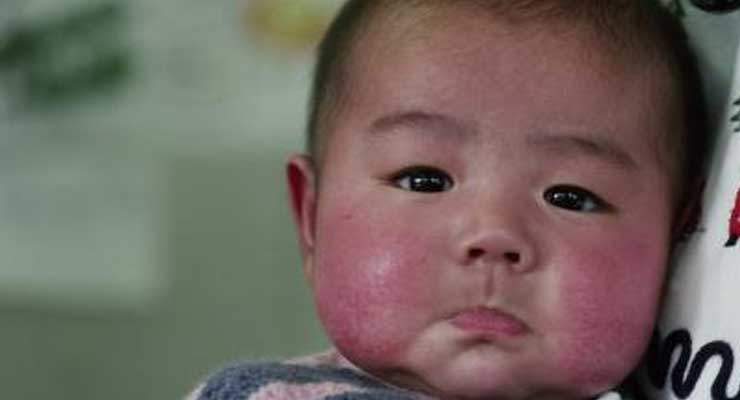Few things are cuter than a rosy-cheeked toddler, but in some cases, those bright red cheeks may be the sign of a more serious underlying condition. Though it’s fairly rare, some toddlers can develop rosacea, a skin disorder more common in older people. Knowing how to recognize and treat this condition can help ensure that your child’s skin problem doesn’t become a major issue.
Identification
Rosacea is a chronic skin condition characterized by red and swollen skin, especially on the face. It often starts as red patches or rosy cheeks and turns into permanent red areas as it develops. As many as 14 million Americans have rosacea, estimates the American Academy of Dermatology, and most of them are fair-skinned people in their 30s, 40s or 50s. But some children, including babies and toddlers, can develop rosacea, too.
Causes
The cause of rosacea has not been determined, but your toddler may be more likely to develop it if you or other members of your family have the condition. As many as 40 percent of people with rosacea said that they had at least one other family member with the disorder, according to the National Rosacea Society. Some children who are taking topical corticosteroids may develop a variant disorder known as steroid rosacea.
Significance
The biggest problem people with rosacea face is usually the toll the condition may take on their self confidence, according to the American Academy of Dermatology. As many as 70 percent of people with rosacea say the characteristic flushing and pimple-like spots that go with it negatively affect their self confidence. For toddlers with rosacea, the emotional effects are more likely to be a problem as they get older.
Considerations
Rosacea has no cure, but you can help your child prevent her condition from getting worse by helping her avoid anything that causes her rosacea to flare up. Rosacea triggers can vary from person to person, but often include environmental factors like sun exposure and extreme temperatures as well as lifestyle factors like eating spicy foods, being under emotional stress, or using some skin care products, including products that contain peppermint, witch hazel, alcohol, eucalyptus oil, salicylic acid or fragrance. If your child’s rosacea is caused by corticosteroid use, discontinuing use of the steroids can make the condition disappear in as little as four weeks, found researchers at the Department of Dermatology at University of Colorado School of Medicine in research published in the journal “Archives of Pediatrics and Adolescent Medicine” in 2000.
Warning
Rosacea can be tricky to diagnose, especially in toddlers, because toddlers are prone to skin rashes that can look a lot like rosacea, says Amy Paller, professor of pediatrics and dermatology at Northwestern University Medical School, on the National Rosacea Society website. Unfortunately, some of the treatments for common childhood rashes can make rosacea worse, so if you have a family history of rosacea and your child shows rosacea symptoms, let your pediatrician know.





